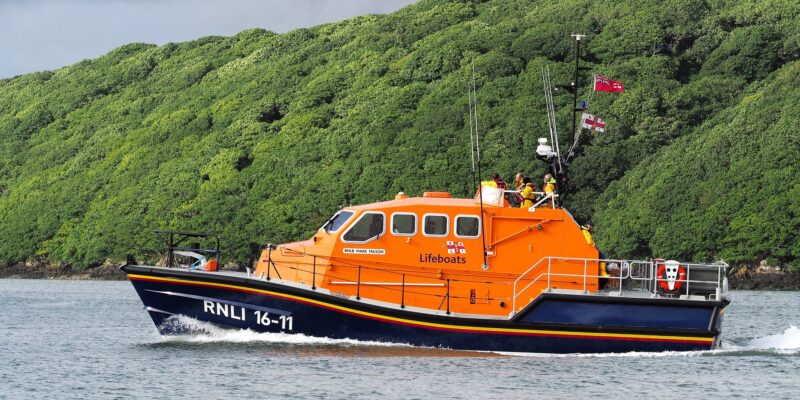Throughout my 20-something years in the industry I’ve seen many examples of how good financial planning can have a profoundly positive effect on people’s lives. I want to share with you a personal experience that highlights just how deep the relationship we have with our clients – and the wider impact it can have – can possibly go.
This is a true story about how a simple question from an adviser changed someone’s life, and subsequently the lives of hundreds of people.
Many years ago, I joined a local financial planning firm as an in-house paraplanner. One of the firm’s clients was a lady called Sally; a formidable woman in her 60’s, fiercely independent and with a wicked sense of humour. She didn’t have much in the way of close family but had a small group of very good friends that regularly came to visit.
She’d lived quite an unusual life, spending much of her younger adulthood living and working in America as a sheriff, as well as being a nanny and joining the army. She travelled the world extensively, often hitchhiking on cargo ships to get around.
Unfortunately, Sally suffered from very poor health. Since her mid-50s she’d had breast cancer, bowel cancer, short bowel syndrome and several malignant melanomas. She couldn’t walk much and was permanently rigged up to a Hickman Line to administer a regular cocktail of drugs, as well as a colostomy bag on account of her intestines only being one metre long, having had most of her colon removed through surgery. She could barely eat, and what little food she was able to consume was very restricted so that she was able to digest it; what she referred to as “white food on a white plate”. In short, every day was a struggle and her life expectancy was severely reduced.
When Sally first came to our firm for advice, about 20 years ago, she had a big tax problem. Her late father was a successful pioneer in the electronics industry back in the 1950s and 60s, so when her parents died, she inherited a sizeable sum. I don’t think it ever sat comfortably with her, the fact that she didn’t earn the money herself. She lived her later life in the same house that she was born in, was amusingly frugal when it came to spending money on herself (but was always generous to others), and only ever spent significant amounts of money on travel and healthcare.
The big tax problem was that her portfolio consisted almost entirely of single company shares, inherited from her father. He’d died some years before, and the shares had shot up in value to the extent that the Capital Gains Tax problem was significant and she was comfortably a higher rate taxpayer due to the dividend income.
When the adviser first met with Sally, his immediate thought wasn’t about restructuring the portfolio to save tax. It was about what she actually planned to do with the money. It was clear from both her health and financial situation that the capital would comfortably outlive her, so any planning that we did would need to take account of who would eventually benefit from it, given that she had no real family to speak of.
Sally thought about this and said that she’d always rather fancied giving it to the RNLI. As a child, she’d regularly sat on the local harbour wall, watching the volunteer lifeboat crews launching their vessel to save lives at sea. Their bravery was something that she’d always found quite remarkable.
The adviser, looking at her cash flow, asked a very simple question. “If we were able to calculate how much money you need to keep back to meet your expenditure for the rest of your life, how would you like to make a gift to the RNLI now, so you can see for yourself how your donation will help them?”
This was met with agreement, and after some careful restructuring, she eventually became a permanent basic rate taxpayer and the Capital Gains Tax issue was alleviated by donating £300,000 worth of her shares to the RNLI.
It’s fair to say that the RNLI were amazing with her. The next big project that they needed to spend money on was a new inshore Atlantic 75 lifeboat for a port in Ireland. The boat was subsequently built, and Sally and her friends were escorted down to Poole as guests of honour for the inaugural naming and launch of the lifeboat, before its maiden voyage.
A year later, Sally decided to go and visit ‘her’ lifeboat. She got on a cruise ship – with her closest friends by her side – and they sailed across to the port in Ireland. She was introduced to the crew and they quickly became good friends. She took the whole team out to lunch at a local restaurant and proceeded to highlight her concerns about the ‘barnacle problem’ arising as a result of the boat having to live permanently in the water. It was clear that the crew had to cope with some very basic conditions. There was no shower, changing area or toilet facilities and their entire ‘office’ was an old cargo container on the harbour-side.
On the way home, Sally contacted her adviser and told him that she wanted to build her “boys and girls in Ireland” a proper lifeboat station… Cue another £300,000 withdrawal from her portfolio!
Over the next few years, Sally developed strong ties with the team in Ireland. She visited them every year and took them out for lunch every time. The RNLI were equally generous. Every time they saved a life at sea, they would ask the rescued person if they’d mind adding a message to their visitor book. Each time a book was filled, they’d send it to Sally as a keepsake, so she could read the messages from all the people that her generosity had helped save.
They regularly emailed and texted her too, with details of the callouts they’d been on recently, as well as photos, newspaper clippings and even an oil painting of her boat. Her house was literally decorated with mementos – she was very proud of them all and regularly spoke with the crew on the phone.
On one occasion a few years ago, a large Clipper with around 40 children on board ran into rocks in dangerous conditions off the Irish coast and was rapidly sinking. Her lifeboat was the first on scene and the helmsman jumped into the freezing water and rescued every one of them. He won a medal for his bravery.
A few months later, the wreckage of the Clipper was raised from the water and the RNLI salvaged some of its sails. They had the sails cleaned and made into a bag, which they sent to Sally as a gift.
I’m not exaggerating when I say that Sally’s discovery of charitable lifetime giving, and the relationship that she developed with the RNLI, gave her many more years of life. She had a purpose to keep getting out of bed, and there was always a new ‘project’ or visit to Ireland to take the crew out for lunch to look forward to.
My partner (who also worked in the IFA firm) and I became good friends with Sally over the years. We occasionally accompanied her on the cruise ships to Ireland and spent the day with the crew, looking around the boat and helping Sally “inspect the station”. I once took a lovely photo of her on the balcony of her cabin on the cruise ship, which now hangs proudly over the entrance of the lifeboat station, watching over all who enter and exit the building. She was lovingly referred to as their ‘Godmother’. I think she viewed them as her extended family.
Spending time with the RNLI is a truly humbling experience. They’re funded entirely by donations and they enabled Sally to feel really involved in everything her crew did over the years. My partner and I now support the RNLI ourselves and we’ve visited their training base in Poole. Watching them overturn a lifeboat full of crew in a deep, dark swimming pool with blacked out windows, rain, lightening and waves going on around them is truly terrifying. It takes a special kind of person to volunteer themselves for that, even in a controlled environment.
Sally passed away in November 2017, aged 81. I don’t think there was a dry eye at her funeral. I remember looking around the room, thinking how many people’s lives she’d changed and influenced through her relationship with the RNLI. As for myself, I’ve had experiences through her that I never would have had, and it’s opened my eyes to what extraordinary things we can do – and overcome – as human beings.
It’s also made me realise one fundamental thing, that I think we in financial planning sometimes forget. Our clients can influence our own lives, just as much as our advice can influence theirs.
What an incredible butterfly effect that is. One simple, unassuming question from an adviser all those years ago has enabled Sally and the RNLI to save literally hundreds of lives. There are people walking this Earth that wouldn’t otherwise be here, and families that still have their loved ones… That simple question probably also gave Sally another 15 years of life, which was full of amazing experiences, new friends and happy memories.
Her legacy lives on, even now. On her death, her estate was wound up – free of Inheritance Tax – into a charitable trust that continues to contribute towards the equipment and training required to keep her boys and girls in Ireland safe for many years to come. It’s already funded a replacement lifeboat for the one she originally bought them, and they now skip over the waves in a shiny new Atlantic 85. My partner and I have vowed to still regularly visit the crew, inspect the station, and take them out for lunch at that same restaurant, on Sally’s behalf. When we walk through the entrance, we still salute Sally’s picture on the wall, watching over everyone, and remember her with great fondness.
We scattered her ashes overlooking her lifeboat station, in front of the whole crew and team of volunteers who’ve been supported and moved by Sally’s involvement in their community, so a part of her will forever remain there.
What an amazing thing to be part of. Let’s never take for granted the ability we have as financial planners – and as human beings – to really change a life.
“10-4, Sally – over and out”.
Kim Bendall is an outsourced paraplanner and director of Go Paraplanning Limited (www.goparaplanning.co.uk)

